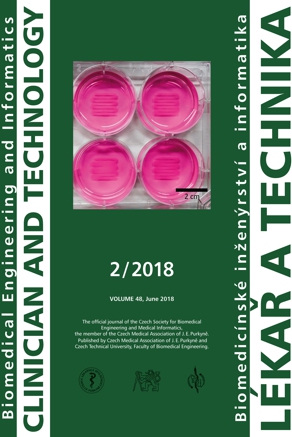MACHINE LEARNING USING SPEECH UTTERANCES FOR PARKINSON DISEASE DETECTION
Keywords:
Parkinson's disease, speech, machine learning, digital biomarker, classificationAbstract
Pathophysiological recordings of patients measured from various testing methods are frequently used in the medical field for determining symptoms as well as for probability prediction for selected diseases. There are numerous symptoms among the Parkinson’s disease (PD) population, however changes in speech and articulation – is potentially the most significant biomarker. This article is focused on PD diagnosis classification based on their speech signals using pattern recognition methods (AdaBoost, Bagged trees, Quadratic SVM and k-NN). The dataset investigated in the article consists of 30 PD and 30 HC individuals’ voice measurements, with each individual being represented with 2 recordings within the dataset. Training signals for PD and HC underwent an extraction of relatively well-discriminating features relating to energy and spectral speech properties. Model implementations included a 5-fold cross validation. The accuracy of the values obtained employing the models was calculated using the confusion matrix. The average value of the overall accuracy = 82.3 % and averaged AUC = 0.88 (min. AUC = 0.86) on the available data.Downloads
Published
Issue
Section
License
Copyright (c) 2018 Ondřej Klempíř, Radim Krupička

This work is licensed under a Creative Commons Attribution 4.0 International License.
Authors who publish with this journal agree to the following terms:
- Authors retain copyright and grant the journal right of the first publication with the work simultaneously licensed under a Creative Commons Attribution License (https://creativecommons.org/licenses/by/4.0/) that allows others to share the work with an acknowledgment of the work's authorship and initial publication in CTJ.
- Authors are able to enter into separate, additional contractual arrangements for the non-exclusive distribution of the journal’s published version of the work (e.g., post it to an institutional repository or publish it in a book), with an acknowledgment of its initial publication in this journal.
- Authors are permitted and encouraged to post their work online (e.g., in institutional repositories or on their website or ResearchGate) prior to and during the submission process, as it can lead to productive exchanges.
CTJ requires that all of the content of the manuscript has been created by its respective authors or that permission to use a copyrighted material has been obtained by the authors before submitting the manuscript to CTJ. CTJ requires that authors have not used any copyrighted material illegally, as for example a picture from another journal or book, a photo, etc. It is the author’s responsibility to use only materials not violating the copyright law. When in doubt, CTJ may ask the authors to supply the pertinent permission or agreement about the use of a copyrighted material.
The opinions expressed in CTJ articles are those of authors and do not necessarily reflect the views of the publishers or the Czech Society for Biomedical Engineering and Medical Informatics.


